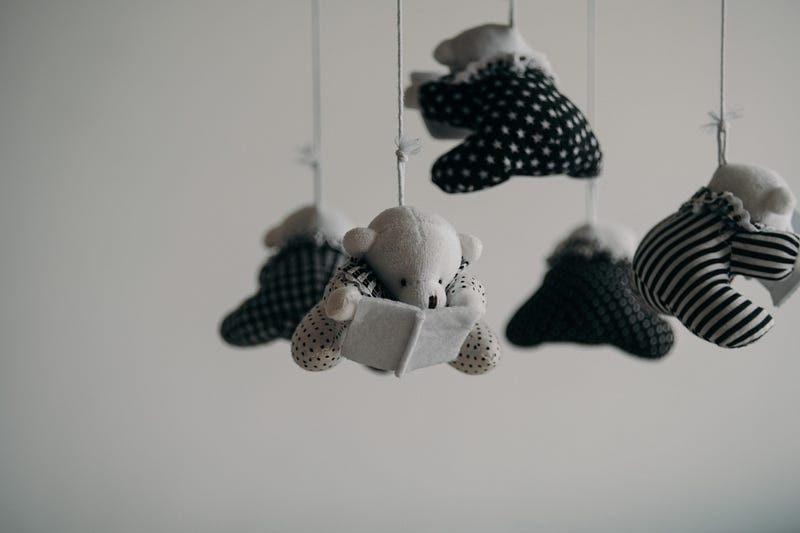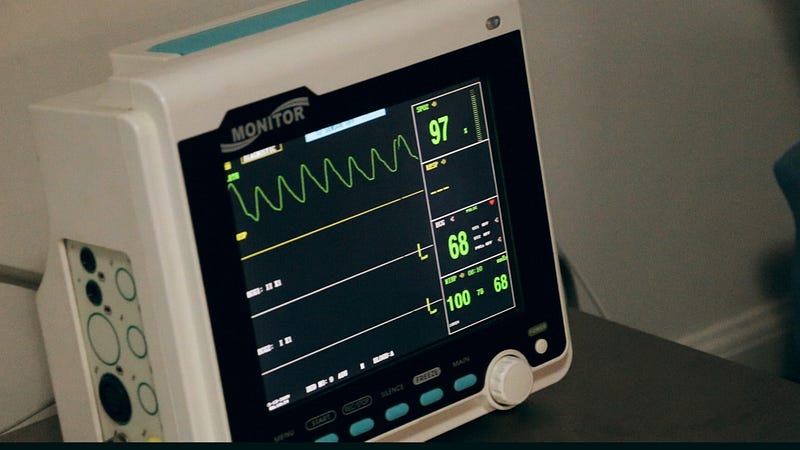Cats and Newborns: Surprising Similarities Explored
Written on
Chapter 1: The Unexpected Comparison
It was during the second week after bringing our baby home from the hospital that my husband attempted to lay our child down in his crib for the third time that evening. Observing the baby’s wide-open eyes, he remarked, “He’s just like the cat.” I chuckled at the absurdity of such a comparison. However, that night—or rather, the early hours of the morning, as I rocked a recently-fed baby back to sleep—I heard the cat feeder activate. This led me to genuinely ponder the striking similarities between our newborn and our feline friend.
Both are small, adorable, and soft. They love to nestle on our laps and tend to fuss when shifted. Both spend a significant amount of time sleeping and require assistance with their bathroom needs. Additionally, they insist on being fed according to their own schedules, regardless of what works for us. And let’s not forget about those sharp little claws! While one (the cat) will remain petite and fluffy for life, the other (the baby) will grow, evolve, and likely navigate an awkward teenage phase before reaching adulthood. Still, it’s hard to ignore how much alike they truly are—unless, of course, my sleep deprivation is finally getting the best of me.
Section 1.1: Size Matters
When my son was born, he weighed 7 pounds and 7 ounces, slightly above the average male birth weight of 7 pounds and 6 ounces. After losing a bit of weight initially due to breastfeeding, he was just shy of 8 pounds by the time he reached three weeks. According to growth charts, an average baby weighs just over 9 pounds by one month and nearly 11 pounds by two months, depending on gender. In comparison, a typical house cat weighs around 10 pounds, though this can vary by breed and size. My cat, who tipped the scales at 12 pounds during the last vet visit, will soon be outpaced by my growing baby.

Moreover, newborns and cats are relatively similar in length. A full-term newborn typically measures between 18 and 22 inches, while an average cat ranges from 15 to 20 inches. While the baby will eventually learn to walk and run, at the moment, they are quite comparable in size.
Section 1.2: Sleep Patterns
Newborns are known for their extensive sleeping habits. Experts suggest that a typical newborn sleeps around 14 to 17 hours daily, albeit in short bursts of 1.5 to 4 hours at a time. This unpredictability is a source of frustration for many sleep-deprived parents. My hope for a longer nap from my little one remains high.
For cat owners, these sleeping patterns might seem all too familiar. Cats average about 15 hours of sleep daily, fitting right within the newborn range. Like babies, their naps tend to be irregular, with cats rising to explore when they feel like it. Interestingly, cats are classified as crepuscular, meaning they are most active during dawn and dusk.
The video "Cats Love Babies" showcases the adorable interactions between felines and infants, highlighting their shared behaviors.
Chapter 2: Communication Styles
When it comes to communication, newborns cry to express their needs. Whether hungry, needing a diaper change, or seeking comfort, crying is their primary means of getting attention. Each cry can vary, with some being louder and accompanied by gestures like sucking on their fists when they’re hungry.
Cats, on the other hand, meow to convey their desires. They meow when they want food, to go outside, or to receive affection. These meows can also vary in tone and often come with specific body language cues, such as tail movements. Interestingly, both crying babies and meowing cats trigger a similar involuntary response in the human brain, making their sounds particularly effective at grabbing our attention.
The video "Cat Obsessed With Baby Brother Thinks He's Also A Baby" captures the unique bond between cats and their baby siblings, showcasing their interactions.
Section 2.1: Vision Limitations
Newborns have limited vision during their first few weeks, primarily able to recognize their parents' faces. They are born nearsighted, with a visual acuity of approximately 20/200 to 20/400, and their color perception is also poor. This is why many baby toys feature bright colors and distinct patterns.
Cats share similar visual constraints, with an acuity ranging from 20/100 to 20/200. They can see the same core colors as humans (red, blue, and green) but struggle to differentiate between similar shades. Interestingly, cats do possess advantages in vision, such as enhanced low-light capabilities and a broader field of view.

Photo by insung yoon on Unsplash
Section 2.2: Vital Signs
It's commonly known that newborns have a much faster heart rate than adults. A newborn's heart beats between 120 and 160 times per minute, while an adult's averages between 60 and 100 beats. This discrepancy certainly caught me off guard during my first ultrasound, where I thought, “Isn’t that a bit too fast?”
Respiration rates also differ significantly; newborns breathe 40 to 60 times per minute compared to 12 to 16 for adults. Cats exhibit heart and breathing rates that resemble newborns more closely, with an average heart rate of 140 to 220 beats per minute and a respiration rate of 20 to 30 breaths per minute. While there are no exact matches, notable similarities exist.

Photo by Jair Lázaro on Unsplash
Conclusion: A Unique Connection
In summary, science provides substantial evidence supporting the notion that newborns and cats share several similarities. From their sleeping habits to the ways they communicate, it's clear that these two groups have more in common than one might initially think. As I navigate this sleep-deprived journey, I can take comfort in knowing I’m not alone in this observation.
While I didn’t touch on the shared love for milk, it’s important to note that adult cats can’t digest it, unlike their kittens. So, it's best to refrain from giving your adult cat milk unless you want to deal with some messy consequences.
For now, I’ll refer to this “newborn phase” as the “cat phase” until my little one grows and begins to sleep more soundly. Here’s hoping the next stage of his development is a bit less hectic!